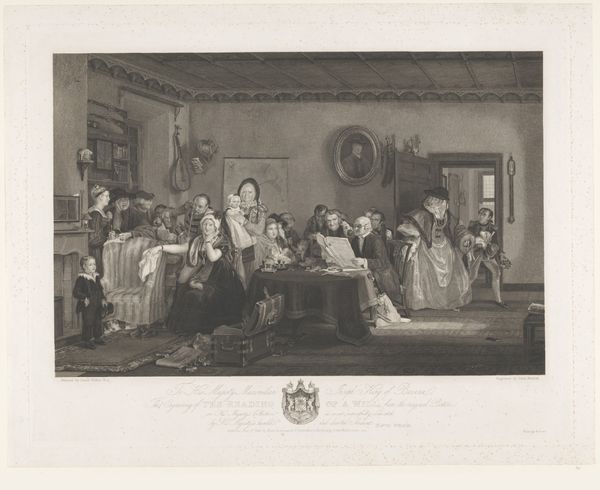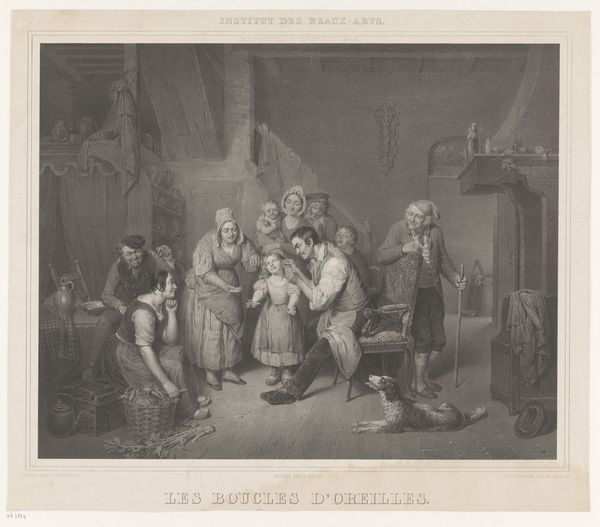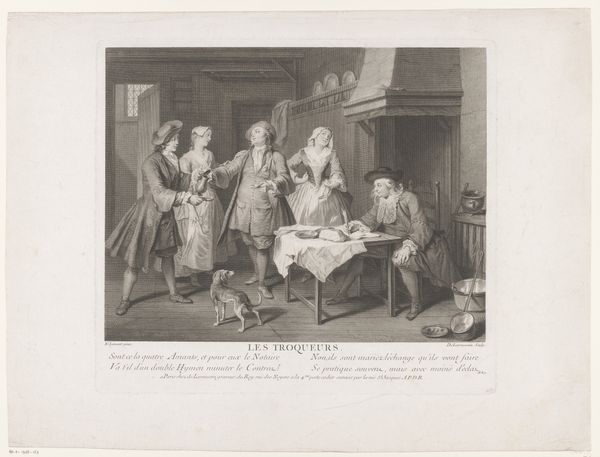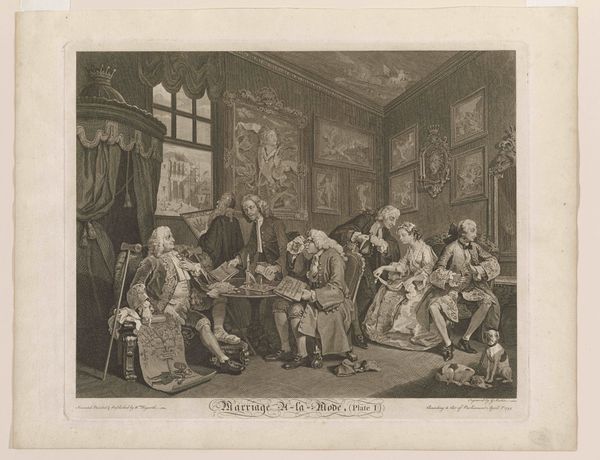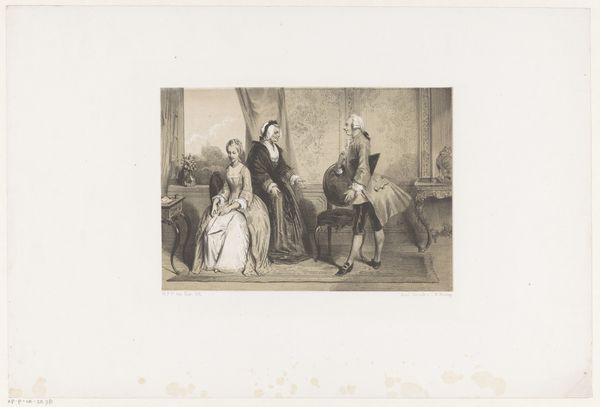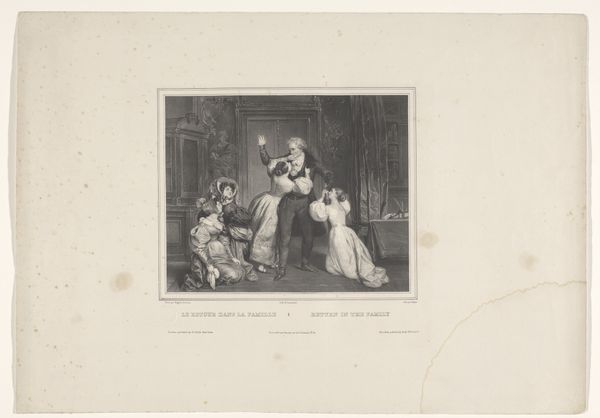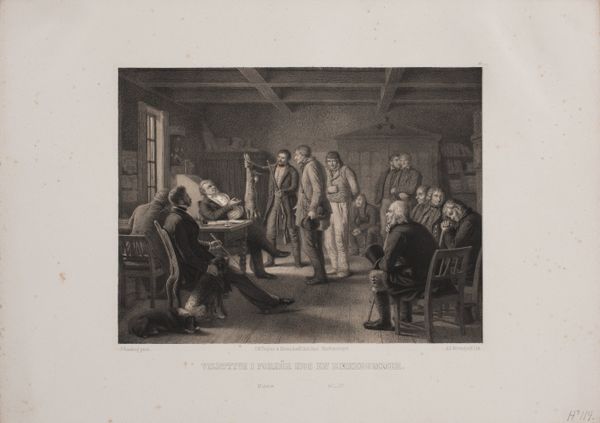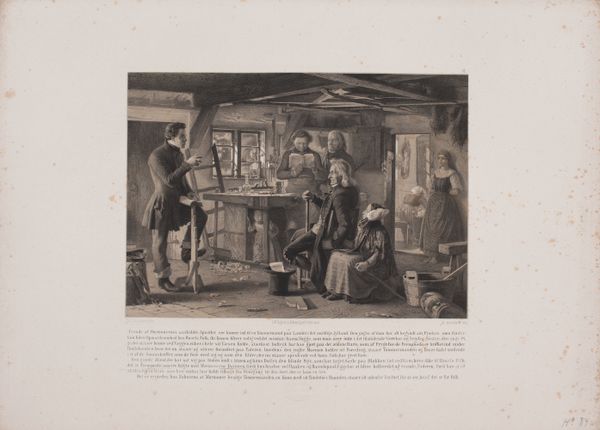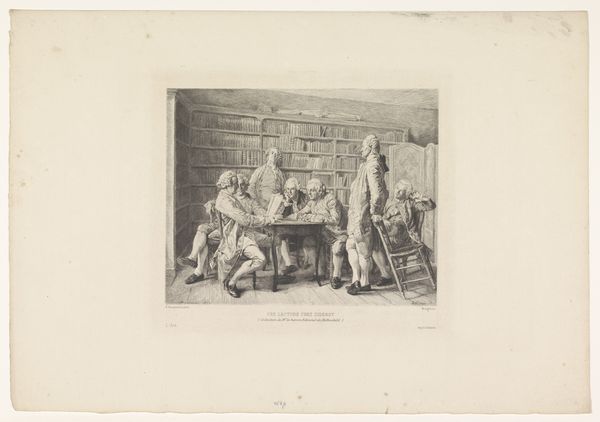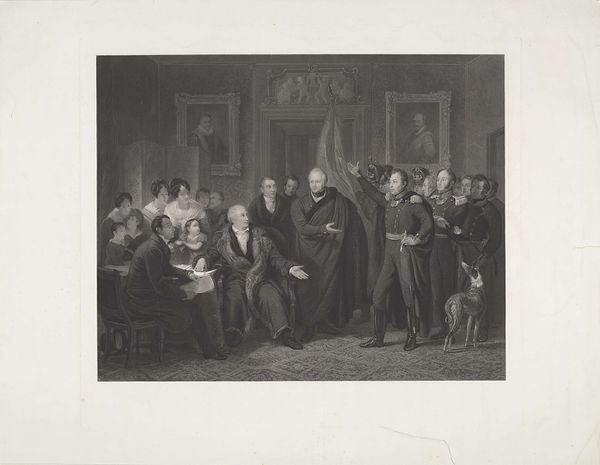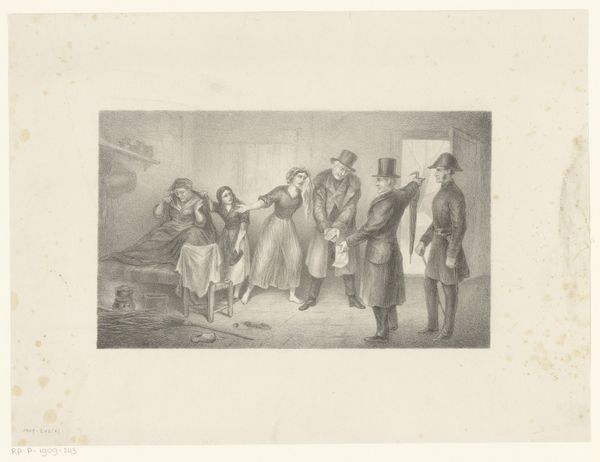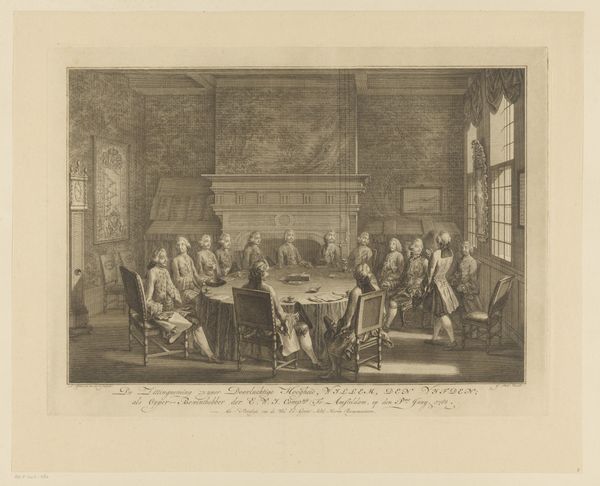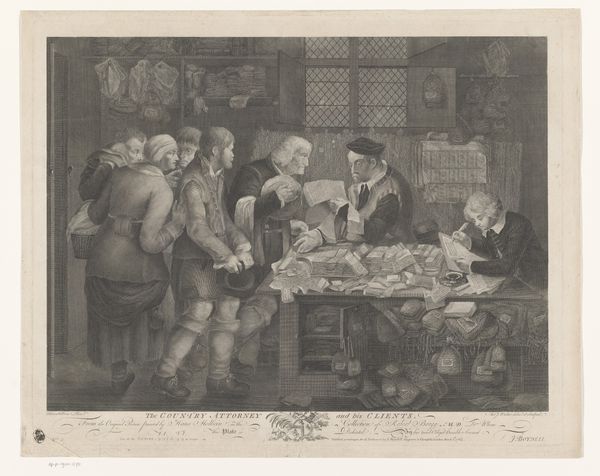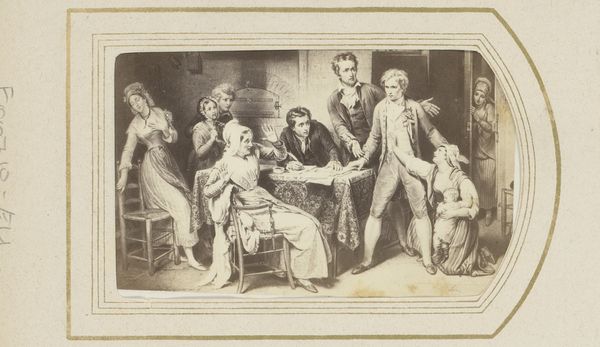
lithograph, print
#
narrative-art
#
lithograph
# print
#
romanticism
#
genre-painting
#
history-painting
Dimensions: 376 mm (height) x 453 mm (width) (plademaal)
Curator: Immediately, I notice the rich contrasts in this lithograph, how the artist manipulates light and shadow to create a scene that's both intimate and a little absurd. Editor: Well, let’s start by setting the stage. What we’re looking at here is a print titled "Erasmus Montanus," made in 1850, and currently held at the SMK, the National Gallery of Denmark. It’s attributed to Peter Gemzøe. The work appears to be influenced by a dramatic work—do you have some thoughts on this connection? Curator: Definitely! It seems this is based on a play or literary work—probably popular in its time—judging from how theatrical everything seems, you know, in a folk, low-art sense. Editor: Indeed. Think about lithography in the mid-19th century; its availability made art accessible, which broadened cultural horizons, right? Reproducing theatrical scenes in prints put high culture within reach of many. Curator: The figures! Observe their expressions! A scholar figure—likely Montanus—dominates the foreground; the expressions are everything. But I also keep asking myself, what materials were accessible? How did they affect scale? Editor: See how the artist creates texture and detail with the lithographic process? It reminds us of a painterly quality—how light hits the various surfaces: clothing, furniture, faces...The textures really stand out! Curator: Lithography depended on local sourcing for its stone and chemicals, shaping who got to make what, and impacting where the work circulated based on economic routes! The economic element matters! Editor: True, but without an understanding of composition—the careful arrangement of figures in space—and the stark value contrast of shadow that helps focus the eye on the scholar's animated gesturing, wouldn’t we be missing the vital elements in visual language at play? Curator: Both elements combine! The ability to access and reproduce materials informs its reach, democratizing art but also embedding it into networks of consumption, reflecting everyday narratives in these communities. The technique only elevates what materials made possible! Editor: In the end, analyzing "Erasmus Montanus", it seems that engaging with its historical setting or construction lets us find different keys into it; and so even while seeming so conventional or traditionally figurative, the print pushes back at easy interpretations.
Comments
No comments
Be the first to comment and join the conversation on the ultimate creative platform.
